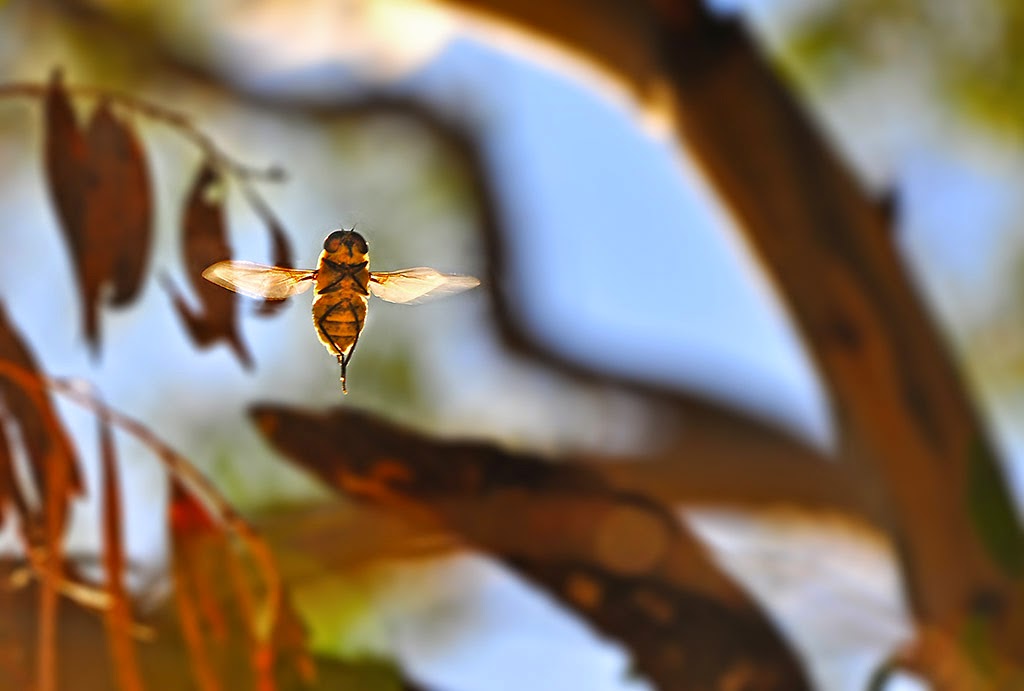How to construct the best Insurance Policy for your Agricultural Business Venture
 |
| image: Alan Nicol |
This is actually a Part II to my previous post on attracting Bees and Wasps to the Farm and/or Garden. While this slide presentation from the Xerces Society by Wildlife Biologist Marcus Miller which reveals and illustrates real world construction examples in the Central Valley of California on commercial Farms, it should also be noted that these natural approach innovations and guiding principles can be replicated and practical application can also be used for the small farms, urban landscapes and home gardens. This should also impress upon folks that the junk direction with which industrial science has always taken humankind, especially since they pimped how their World War II bomb making chemicals could now be used in their 1950s Green Revolution which was going to save all of mankind in reality turned out to be a disastrous mistake. Nobody questioned their authority back then. But they should do so now. Question who and what you are putting your trust and faith into. Like so many things which are hastily approved for fast and easy profiteering, there are now these long term consequences which every living thing is being forced to pay a high price. The pictures below are another beautiful illustration reveal how nature has always been equipped with tools for arriving at a balance. One of the major things I want everyone to pay close attention to in these hedge row construction zones border croplands in California's Central Valley, is the long over due recognition and use of California's native Chaparral plants and the roles they could well play in saving this part of the world from overuse or use at all of tons of chemicals used in Farming. Take note here, a recent California research study in San Francisco found that wild bees play a major role in pollination within the city, and notice what was key:
"And, in what appears to be good news for farmers in space-starved cities, the amount of pollination a plant received was driven not by how large the garden was, but how densely it was populated with flowers."
"Previous research had shown that "pollinator deserts" such as the Central Valley of California lack the amount of bees needed to provide adequate service to plants compared with wildland areas"
(Source)
So, the determining factor for good garden pollination was not how large it was, but how densely populated it was with plethora of flowers. More and more chaparral hedge rows could be a win win in supplying and regular multi-seasonal flowering array all year long depending on species selected for flowering time [Spring, Summer, Fall, Winter] and just about completely eliminate the need for tons of chemical pesticides. As time goes on, more and more respect will be paid to our California's Chaparral plant community. And to think, the answer was always here all along. View these important illustrations below and take notes people. Looks like those Central Valley Deserts are going to be changing towards a native wildscape much like it was back in history.
~~~~~~~~~~~~~~~~~~~~~~~~~~~~~~~~~~
~~~~~~~~~~~~~~~~~~~~~~~~~~~~~~~~~~
~~~~~~~~~~~~~~~~~~~~~~~~~~~~~~~~~~
~~~~~~~~~~~~~~~~~~~~~~~~~~~~~~~~~~
~~~~~~~~~~~~~~~~~~~~~~~~~~~~~~~~~~
~~~~~~~~~~~~~~~~~~~~~~~~~~~~~~~~~~
~~~~~~~~~~~~~~~~~~~~~~~~~~~~~~~~~~
~~~~~~~~~~~~~~~~~~~~~~~~~~~~~~~~~~
~~~~~~~~~~~~~~~~~~~~~~~~~~~~~~~~~~
~~~~~~~~~~~~~~~~~~~~~~~~~~~~~~~~~~
~~~~~~~~~~~~~~~~~~~~~~~~~~~~~~~~~~
~~~~~~~~~~~~~~~~~~~~~~~~~~~~~~~~~~
~~~~~~~~~~~~~~~~~~~~~~~~~~~~~~~~~~
~~~~~~~~~~~~~~~~~~~~~~~~~~~~~~~~~~
~~~~~~~~~~~~~~~~~~~~~~~~~~~~~~~~~~
I really loved the use here of California native chaparral and other plants for use as biological control attractants of beneficial insects for pollination, predatory abilities and use as buffers and habitats for these beneficial critters for life within and around farm fields. There are clearly far more to the slide presentation, but you'll have to view it on your own from the link below. They also have a 2014 version which is presented by Pollinator Conservation Specialist Nancy Lee Adamson PhD:
Southern SAWG - Farming for Beneficial Insects (Pollinators, Predators, and Parasitoids) 17 and 18 January 2014
Here is the original January 2015 version in which you've just viewed the illustrated pictures which I've referenced in the post above and the earlier post. I'll also include other relevant links.
Xerces Soceity Marcus Miller Presentation on Biological Control Habitat
http://www.xerces.org/
http://permaculturenews.org/
http://www.nsfarming.com/
http://www.naturalsequencefarming.com/
~~~~~~~~~~~~~~~~~~~~~~~~~~~~~~~~~~
Each region of the globe with it's varying ecosystems operates with the same basic fundamentals as mentioned here. While the photo presentation dealt with attracting local pollinators and predators with native California Chaparral plant community vegetation, you should learn the variables unique to the global region in which you live and make practical application accordingly. For those readers who are from the region of the southwestern United States, here is enormous reference library resource about how the Chaparral plant community operates and functions from this link below:
http://www.californiachaparral.com/
San Francisco State University: "City buzz: Urban pollinators get the job done"















It's great post! Thanks for sharing!
ReplyDeleteYour welcome, the Zerces Society has some great teaching illustrations
Deleteit looks like Hedgerow Farms John Anderson's work. He did some really nice work too. Did he work on this project? I love the Napa False Indigo!
ReplyDeleteI'm not really sure whose farm this was. I was doing some research out there because I've always been sold on native chaparral for commercial landscaping and farming as wildlife habitats and native windscreens. I hate the fact that natives were rejected in favour of some non-natve invasives like various forms of Tamarisk for desert agriculture. The early science of the times made some incredibly stupid ignorant decision making that we are all still paying for.
Delete